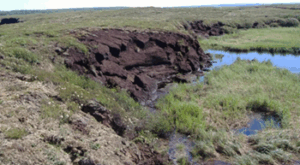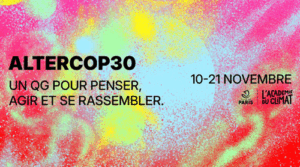Soutenance de thèse
Xavier Bonnemaizon
LSCE
Mobility and urban road transport CO₂ emissions at high resolution from Floating Car Data
Résumé
Road transport is a direct source of CO2 emissions, accounting for 11% of global total GHGs, with approximately twothirds of these emissions being generated in urban areas (International Energy Agency). These emissions areaccompanied by harmful air pollutants, posing significant health risks, especially to city inhabitants. Traditional “top-down”emission inventory methods rely on fuel sales data and disaggregation techniques, leading to considerable spatial andtemporal uncertainties.
In contrast, “bottom-up” approaches, based on vehicle counts per road segment combined withemission factors, enable high-resolution estimates useful for environmental modeling and local policy assessment.However, conventional traffic monitoring systems (e.g., inductive loops, cameras, manual counts…) are costly and limitedin spatial coverage. The recent proliferation of vehicle geolocation data provides a new opportunity to reconstruct roadtraffic at lower cost, especially in unmonitored areas.
This PhD thesis aims to leverage such data to estimate urban trafficand associated emissions of CO2 and other co-emitted pollutants at high spatiotemporal resolution. The first chapterdevelops a Machine Learning method to estimate hourly traffic flow and occupancy per road segment in Paris, using onlyopen data traffic monitoring. This work spans the period 2018-2022 and highlights the impact of COVID-19 on mobilitybehavior.
The second chapter applies speed-dependent emission factors from the Computer Program to CalculateEmissions from Road Transport (COPERT) to estimate emissions of CO2, NOx, and PM. The analysis includes theinfluence of fleet modernization and the growing share of Sport Utility Vehicles (SUVs). The third chapter, conductedduring a research stay at the University of California Irvine, extends the bottom-up approach to 457 U.S. cities using streetlevel Floating Car Data (FCD) from TomTom and accessed through the Kayrros company. Since FCD only covers asample of vehicles, the signal is adjusted using statistics from the Federal Highway Administration. The data’s speeddistribution enables the use of the MOtor Vehicle Emission Simulator (MOVES) model for emissions estimation. The roleof traffic congestion and population density is also explored. The fourth chapter focuses on Europe, where validation datafor traffic volume is less accessible. We compile open traffic datasets from 36 major cities and publish a standardizeddataset of annual average daily traffic volumes to support further research. The fifth chapter evaluates the extent to whichprivate FCD data (here from NEXQT company) can replicate the real traffic volumes.
Firstly, our aim is to reconstruct thedaily traffic volumes reported in the previous chapter in 28 major European cities. We examine the performance of locallytrained Machine Learning models before generalizing to broader zones and discuss the limitations of using FCD for thistask. Finally, we compare the performance of classical tabular machine learning models with Graph Neural Networks(GNN) for hourly flow prediction in Paris, Berlin, Madrid and Zurich. This work enhances the quantification of urban CO2 emissions from road transport by leveraging large-scale, heterogeneous geolocation data, providing new insights forspatiotemporal emission monitoring, policy evaluation, and the transition toward more sustainable urban mobility.
Informations supplémentaires
The presentation will be given in English.
Lieu
Auditorium, Bâtiment Lumen, 8 Avenue des Sciences, 91190 Gif-sur-Yvette
Zoom
https://cnrs.zoom.us/j/92460805837?pwd=rrcskb1Ooy0XyPdLqrSdpUnetsrnba.1
Composition du jury
- Marielle SAUNOIS – Professor, University of Versailles Saint Quentin en Yvelines (President)
- Greet JANSSENS-MAENHOUT – Deputy Chief of Unit, Joint Research Center (Reviewer)
- Vincent-Henri PEUCH – Director of CAMS, European Centre for Medium-Range Weather Forecasts (Reviewer)
- Guillaume COSTESEQUE – Engineer, CEREMA (Examiner)
- Patricia CRIFO – Professor, École Polytechnique (Examiner)






